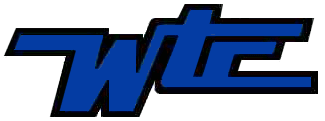

The World Wide Web (WWW) is rapidly becoming an important part of our working and playing world. In a very short time, the web has revolutionized the way we access information, education, business and entertainment. It has created industries where there were none before.
Being
able to develop information on the web might be a job skill, a class
requirement, a business necessity or a personal interest. Unlike any other
previous medium, the ability to write HTML allows you to potentially contact
with millions of other people as your own self-publisher.
HTML is a set of formatting codes that tell the computer how to display a web page. The documents are plain text files with special “tags” or codes that a web browser knows how to interpret and display on your screen. (Currently, the two most popular web browsers are Netscape Navigator/Communicator and Microsoft Internet Explorer).
There are software “tools” that allow you to create web pages without knowing HTML. (For example, this particular lesson was created using Microsoft Word.) While these tools are useful in certain situations, it is important to know that if you are serious about creating web pages, a solid foundation in the basics of HTML will be a great benefit to your career as a web page guru.
At this point, we assume that you have a basic knowledge of and know how to:
We encourage you to use the most basic text editor (notepad, simpletext)while you learn HTML and then later you may want to explore HTML ‘editors’(Frontpage,Communicator, Dreamweaver). When using a text editor, you must remember to save your files in plain ASCII text format. This will be explained more later. If you are using a "Windows" interface computer, click on Start/Programs/Accessories/notepad. You will be using the Notepad software to type your html files for this class.
Helpful Hints
Use the FAVORITES or BOOKMARK feature of your web browser to mark the lesson index page so you can easily navigate to other lessons. We have tried to write instructions which are generic to any web browser. However, please be aware that sometimes the menu names or features may not match the web browser that you are using. As you go through the lessons, if you find something that is particularly confusing, then please let us know – we would like to try to make these lessons as user friendly and usable as possible. You will be creating web pages – but remember that you are not the first to write a web page. Be sure to draw on the ideas of others, especially in the beginning. You can look at the web pages written by other students who have taken this class. Finally, remember that creating web pages is one thing. Designing web pages is another. In the beginning, we will show you how to create web pages – later in the course, we will talk about designing them.What is a programming language?
A programming language is a set of keywords (vocabulary) and a system of rules (grammar or syntax) for constructing the statements by which humans can communicate a set of instructions to be executed by the computer.
Basically, computers by themselves are dumb because they can only understand two things: zero and one. However, they manipulate these binary digits (bits) so quickly that they can accomplish useful tasks. In the early days of computing, programs were written using only zeros and ones.
Obviously, using binary code to program a computer is not very user-friendly so programming languages were created to give us humans a chance to understand the code that we are writing.
Programming languages abstract operations into a form that is more like the way that people think, which makes programming easier and they help us to conceptualize the way that computers work.
Thousands of programming languages have been devised and written but only a few are in common use. COBOL was first introduced in 1960 but is still heavily used in business, C++ (1982) is used in systems programming, Fortran (1954) is one of the oldest programming languages but is still used in mathematical and engineering programming. BASIC (1963) is a commonly used language.
Finally, the Web has sparked a whole new spectrum of programming languages. HTML and Java are the universal languages of the Web.
Why teach HTML in a beginning programming course?
In our opinion, HTML is a good choice for a first programming language for several reasons.
HTML is a commonly used, in demand language
HTML programmers are in great demand
Learning HTML can be used as a bridge to higher languages such as C++ and Java.
Most of the elements of a structured language are included in a study of HTML. A structured language has 3 characteristics:
Sequence is essential because it determines the order that statements are executed. After executing one instruction, the computer goes to the next.
Selection allows decisions to be made. In most languages, it is accomplished through the use of an IF statement. In HTML, it is accomplished more directly – since a user makes decisions by simply clicking on the hyperlink of choice. Selection can be called decision, branching, comparison or jumping. Essentially, it allows the user the opportunity to select one programming option or another option.
Repetition (also called repeating, looping or iteration) is more difficult to demonstrate in HTML. It allows a set of code to be executed over and over. Animation uses repetition.
In addition to these characteristics, another interesting feature is the use of tables or arrays and this topic will be covered later in the course.